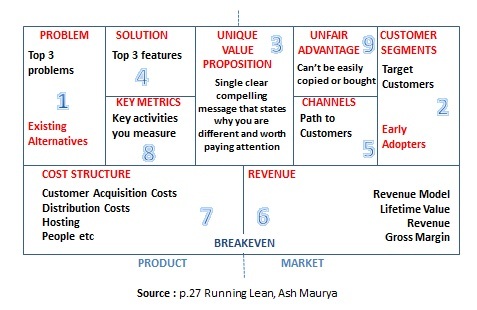What Enterprise Ireland are looking for in a New Frontiers Phase 2 Application in 2020?
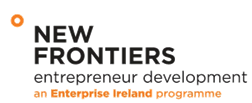 Are you participating on one of the Enterprise Ireland New Frontiers Phase 1 programmes being delivered by the Incubation Centres in the Institutes of Technology in Ireland? If yes, you may have started completing your Phase 2 application form … click here to download
Are you participating on one of the Enterprise Ireland New Frontiers Phase 1 programmes being delivered by the Incubation Centres in the Institutes of Technology in Ireland? If yes, you may have started completing your Phase 2 application form … click here to download
GMIT New Frontiers Application 2019 pdf . As a trainer over the years on the programmes in WIT, IT Sligo & Letterkenny, IT Tralee, TU Dublin, DKIT and GMIT, I would like to share some thoughts on what I think Enterprise Ireland are looking for in a New Frontiers Phase 2 participant /business. Originally published in 2013, this article has been updated and revised in 2020.
Potential Scalability
Enterprise Ireland funds and co-ordinates the €4.2m New Frontiers programme, the aim of which is to spawn new companies that will be eligible for Enterprise Ireland’s high-potential start-up (HPSU) supports
Silicon Republic, May 2012
Enterprise Ireland has a fantastic track record of supporting HPSUs (High Potential Startup Companies). New Frontiers is an investment in creating a pipeline of potential HPSUs across all regions in Ireland. The ability potential to create jobs in Ireland is the number one requirement. These Value Creation and Value Realisation equations presented below, as espoused by Tony O’Kelly, New Frontiers Programme Manager in GMIT, will assist us to drill down to see how this ‘potential‘ is assessed at an early stage.
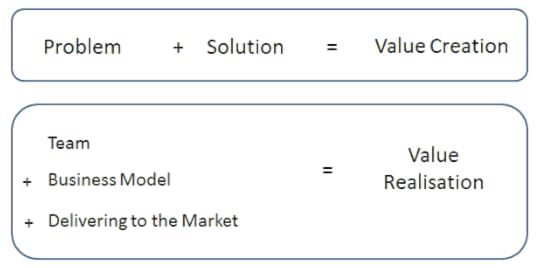 #1. Addressing a Problem Worth Solving
#1. Addressing a Problem Worth Solving
most startups fail not because they don’t manage to develop and deliver a product to the market; they fail because they develop and deliver a product that no customers want or need.
Steve Gary Blank – The Four Steps to the Epiphany: Successful Strategies for Products that Win
The very first issue for every early stage startup is to identify ‘a burning problem’ for a specified customer segment. In Running Lean, Ash Maurya presents the three stages of a startup.
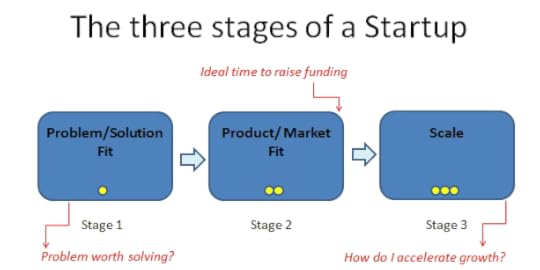 Source: Adapted from Figure 1.3 Page of Ash Maurya’s Running Lean on page 8
Source: Adapted from Figure 1.3 Page of Ash Maurya’s Running Lean on page 8
I suggest that applicants to New Frontiers Phase 2 should focus on showcasing in their application that they have achieved Problem/Solution fit.
You need to ‘get out of the building’ and talk to potential customers. You need to figure out if potential customers and end users have a problem worth solving – will they pay for your solution and are they already paying for some solution. Is this a ‘must have’ rather than a ‘nice to have’ offering. The key at the early stage is to ask customers to identify the problems that they are experiencing rather than to ask them what they think the solution should be or entail.
#2. A viable solution
My background is Marketing. I have met with lots of startups so I have a working knowledge of technology. In 99% of cases, if there is a problem, a team of scientists or engineers or other experts can find the solution given sufficient resources. I suggest that applicants to Phase 2 should focus on proving in their application that they have the wherewithal to develop a viable solution (as opposed to creating a demo). They will also need to highlight how this solution can be protected and not easily copied (Intellectual Property is a huge advantage). It is also important to explain the technology without too much jargon. One way to do this is to outline a Use Case Scenario for a typical customer.
#3. Market Niche
The first two elements of Tony’s formula: Problem and Solution combine to create Value for a Specified Target Customer Segment.The easiest way for New Frontiers Phase 2 Applicants to demonstrate that they have identified a market niche is to cite relationships with Reference Customers, whether they be in business (B2B) or consumer (B2C) markets.Secondary research outlining market size, trends and major competitors will complete the picture. The ideal scenario is a growing market or sub-market where customers and third parties value innovation as opposed to focusing exclusively on cost.
The value that you create for your customer can take many forms. For B2B, the easiest value to communicate is when your solution leads to increased Sales, or results in cost (also measured in time) savings. For B2C, value results from a gain of something positive or a reduction in something negative. But there is no need to focus exclusively on ‘logical’ value or serious problems. There is a difference between what people ‘need’ and what they ‘want’. Businesses may feel that they need to prove that a valid need is being served. I agree with this sentiment, but would add that if you can find and access a cohort of customers with similar interests and worldviews, and can deliver on an unserviced ‘want’ in less serious domains, then there could be the basis of a sustainable business.
The key issue in the Value Creation equation is the level of pain experienced by customers. For your Phase 2 application, you will have to convince the EI panel that a Target Customer Niche is willing to pay for your solution (or iterations of it) – i.e. that their pain quotient is sufficiently high.
#4. Promoter & Team
Jim Collins in his book ‘Good to Great‘ emphasised the requirement to ‘Get the right people on the bus’. Each New Frontiers Phase 2 application will be assessed to see if the team has the mix of skills required to bring the business to the next level. Domain knowledge, technical and commercial experience and expertise will be assessed. A strong application will outline milestones that have been achieved to date as testament of the value of the current team. It is also important to identify gaps in the team and ideally how and when these will be addressed. At an early stage, start up promoters need to leverage the value of the ‘Non-traditional team’ to include mentors and experienced business advisors and professionals.
#5. Business Model
A business model describes the rationale of how an organization creates, delivers, and captures economic value…… The business model canvas is a shared language for describing, visualising, assessing and changing business models.
Business Model Generation, Osterwalder and Pigneur
A Business Model defines how a business makes money. But, it is about more than Pricing and Routes to Market. The Business Model Canvas facilitates the presentation of your business on one page by challenging you to think about 9 building blocks of every Business Model. The business model generation book uses brilliant examples to outline business model patterns and also provides techniques for creating a business model for your business.
Ash Maurya was inspired by this work to create the Lean Canvas – in this blogpost he explains why he replaced 3 of the 9 original building blocks for his canvas. The value of whichever Canvas you choose is the ability to capture the same core elements you find on a business plan, but because it fits on one page, it’s a lot more concise, portable and readable.
I highly recommend every startup to use (for free) the Leanstack.com tool. There are super step by step instructions to include videos by Ash Maurya on how to complete a canvas for your business.
#6. Focused Plan of Action
The Enterprise Ireland panel will be assessing both technical and commercial milestones in each application.
All startups are experiments – they must be in order to create something worth building. Completing a Canvas is the first step in creating a roadmap for your business. It will challenge you to ask the hard questions of your business and allow your team to sharpen its focus on what really matters. The Running Lean methodology, building on the principles outlined by Eric Ries in The Lean Startup, requires that promoters:
• First find a problem worth solving, before defining a solution
• Find early customers
• Test pricing
• Decide what goes into Release 1.0
• Build and measure what customers want
• Iterate
• Achieve product/market fit
where product/ market fit is achieved when a product solution shows strong demand by passionate users representing a sizable market.
Early Stage Business Case:
New Frontiers is designed to assist male and female entrepreneurs, who have an innovative business idea and the ambition to create a growth focused business. As a promoter your job is to submit a strong application form for Phase 2 of New Frontiers – one that presents the Early Stage Business Case (13 factors).
1. A clear and concise description of the Technology based product or service to be developed
2. Attractive market opportunity – size, trends etc
3. A clear pain statement as to why customers will purchase the solution – differentiation (sustainable competitive advantage)
4. Promoter demonstrated relevant qualifications, experience and domain knowledge (and that they will benefit from the Phase 2 programme)
5. Team members with relevant skills and expertise matched to clear team roles
6. Team has startup and business development expertise and track record
7. Market opportunity supported by Market Research – target markets identified and explored
8.Comprehensive Competitor Analysis
9.International potential (indicative route to market/ ambition)
10.Clearly defined business model including revenue model
11.Strategic Reference Customers
12.Milestones to date indicative of business momentum
13.Credible, achievable and challenging action plan. Proposed implementation based on evidence of past performance and achievements to date? What level of growth is anticipated in relation to turnover, employment potential etc (indicative or summary financials as opposed to detailed financial projections)
Final Point(s):
In New Frontiers, Enterprise Ireland and the IoTs have a proven model to assist startups. The progress of participant businesses over its tenure is testament to its success. As such, I highly recommend New Frontiers to startup promoters with businesses that fit the criteria.
Phase 1 is competitive. To secure a place on Phase 2, your application will have to:
Communicate the core value offered by your business to a sizable customer segment; and
Present a roadmap with realistic commercial and technical milestones in order to realise the potential of the business.
EI has not published their Weighted Selection Criteria for New Frontiers. Last year in Galway at a Pitch meetup which I facilitate, a group comprising of New Frontiers GMIT alumni and applicants who had just completed Phase 1 discussed this very issue and created this graphic – this is not endorsed by Enterprise Ireland but do you agree?
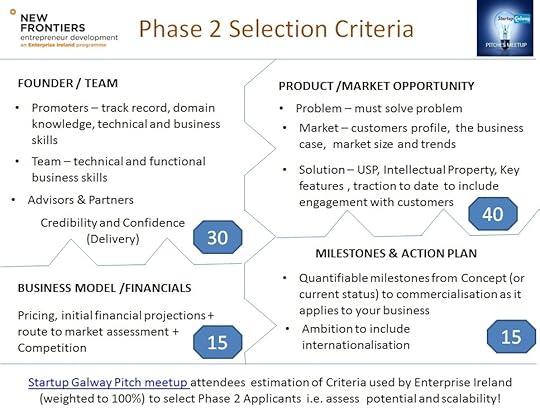 If you get called to Phase 2 Interview stage, I think that this will inform how much time should be spent on addressing and communicating the many elements of your business.
If you get called to Phase 2 Interview stage, I think that this will inform how much time should be spent on addressing and communicating the many elements of your business.
I hope that you find this blogpost of benefit when completing your Phase 2 application. All comments welcome.
regards
Donncha
@donnchadhh
p.s In April 2018, I added a new online workshop called ‘New Frontiers Phase II Application Form’ . The programme was updated to reflect the changes to the Phase 2 form in 2019. It is one hour of videos which dissect the Phase 2 Application form – available for €50 for one year’s access – free preview when you create a Thinkific account – here is the introductory video (11 minutes – compressed):
http://www.startuphughes.com/wp-content/uploads/2019/03/Video-2-for-Intro-New-Frontiers-Phase-2-Application-form.mp4
Related PostsBusiness Model Canvas for Social Enterprise (Mar 15, 2016)
As I explained in this LinkedIn Pulse article entitled "Inspiring: Social Enterprise in Galway ...
CSF Masterclass + Articles about CSF for InspiredStartups.com (Jan 22, 2016)
Click EventBrite Button above to book to attend the FREE CSF Masterclass on Thursday 1st March 2018 ...
Two hour Negotiations Workshop, DCU Invent, 10th November (Nov 5, 2015)
Donncha provides two hour, half day and full day Negotiations Workshops. Please contact to discuss ...
Ten things we probably knew and were reminded of during Startup Gathering Galway 2015 (Oct 14, 2015)
9th October Galway
Last Friday (9th October 2015) was spent meeting new business acquaintances ...
[Book Review] Disciplined Entrepreneurship : 24 Steps to a Successful Startup by Bill Aulet (2013) (Jul 13, 2015)
I have just finished reading Disciplined Entrepreneurship by Bill Aulet, Managing Director, ...
The post What Enterprise Ireland are looking for in a New Frontiers Phase 2 Application in 2020? appeared first on Donncha Hughes, Business Trainer, Advisor & Mentor. Thanks for signing up to my feed regards donncha p.s why not also check out my other website www.startupwebtraining.com
Blog of Donncha Hughes
- Donncha Hughes's profile
- 4 followers


